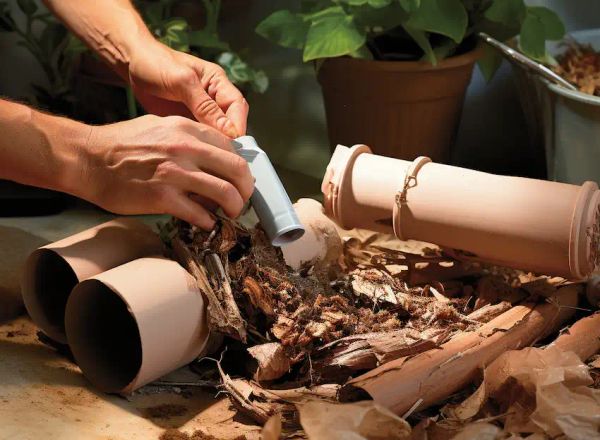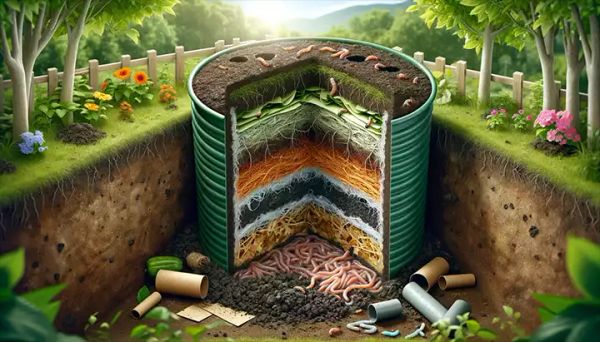Materials Required:
- A length of PVC pipe or a small bucket with a tight-fitting lid.
- An electric drill with a 3/16” or ¼” drill bit.
- Sandpaper for smoothing drilled holes.
- Organic materials for worm bedding like paper bags, newspaper, or dried leaves.
- Composting worms, such as Red Wigglers or Canadian Nightcrawlers. These can be sourced from bait shops or online.

Step-by-Step Instructions:
1. Choose a Location:
Pick a cool, sheltered spot in your garden. Ensure it’s away from the water table to avoid flooding.
2. Prepare the Worm Tower:
If using PVC pipe, cut it to the desired length (around 30cm is standard).
Drill 5mm holes around the sides of the pipe or bucket, up to halfway up. This is for aeration and drainage.
Smooth the edges of the holes with sandpaper to protect the worms.
3. Installation:
Dig a hole in your chosen location deep enough to bury the pipe or bucket with only the top few centimeters sticking out.
Place the pipe or bucket in the hole, with the holes side facing down.
Backfill the hole with soil to secure the worm tower in place.
4. Add Bedding and Worms:
Start by adding a layer of shredded paper or dry leaves at the bottom.
Add your worms. Around 250-300 worms are recommended for each tower.
Gradually add organic kitchen scraps, avoiding citrus, onion, garlic, dairy, and meat.
5. Maintenance:
Regularly add organic matter and ensure the bedding stays moist but not soggy.
Occasionally check for ‘worm tea’ at the bottom, which is an excellent liquid fertilizer.
In case of ant problems, strategies like increasing moisture, using cinnamon, or vinegar can help.
6. Feeding the Worms:
Feed the worms with a variety of kitchen scraps. Balance the ‘green’ kitchen waste with ‘brown’ materials like shredded paper.
Avoid overfeeding, especially in the initial months.
7. Covering the Tower:
Use a terracotta saucer or a PVC cap to cover the top, weighed down with a rock to prevent rodents.
8. Observation and Adjustments:
Monitor the worm activity and adjust your feeding and watering as needed.
The system is largely self-regulating, with worms naturally processing the organic matter.
By following these steps, you can create an effective and eco-friendly underground worm farm in your garden. This method not only recycles kitchen waste but also enriches the soil, making it a valuable addition to any garden.





